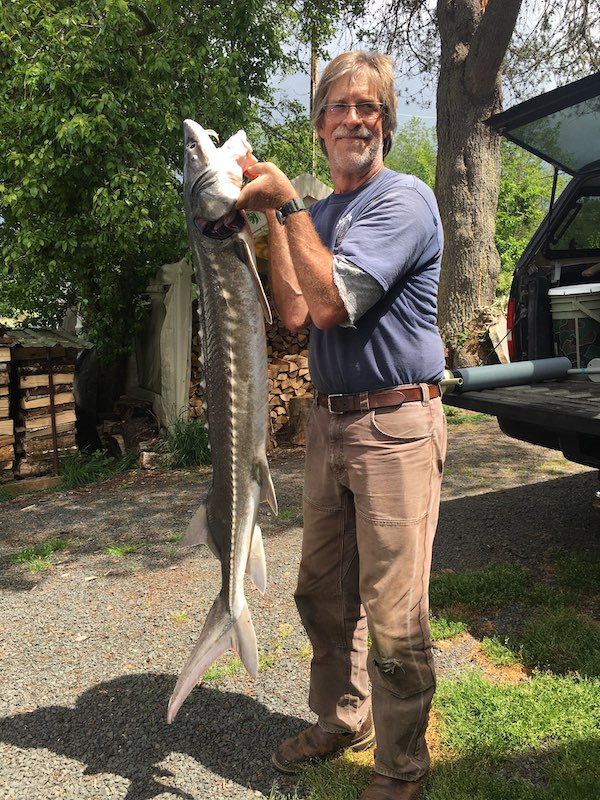
Health Officials Say To Eat Less Lower Columbia Sturgeon
Washington health officials are matching a Lower Columbia sturgeon consumption advisory issued by Oregon authorities last fall due to PCB and mercury levels in the big river.
Both states now say that pregnant or nursing women, and kids should only eat four meals a month of sturgeon caught between Bonneville Dam and Buoy 10, down from seven, and everyone else should only eat six, down from eight.

There will be no sturgeon retention season in these waters this year as the overall population of these slow-growing, long-living anadromous fish continues to decline, driven by poor recruitment of juveniles, but catch-and-release fishing does remain open.
“Consuming large amounts of fish contaminated with PCBs and mercury can cause negative health effects over time and can lead to potential learning and behavioral problems,” the Washington Department of Health said in a press release late last week.
The Oregon Health Authority reduced its Lower Columbia sturgeon meal recommendations last November following “the discovery of a data transcription error in the final calculation.”
Both states say that a meal amounts to a serving of sturgeon the size of your palm, or about an ounce of uncooked fish for every 20 pounds of body weight.
Sturgeon feed on the bottom of the river, vacuuming up morsels they come across. As late as the late 1990s, anglers harvested over 50,000 annually in the Lower Columbia, but last year only 3,200 younger ones were available in the quota below Bonneville.
DOH last week also issued a new consumption advisory for lamprey, a tribally important food source, from the mouth of the Columbia up to the state line 12 miles east of McNary Dam. Women of childbearing age should only eat two meals a month, everyone else four.
The state agency has been busier of late with its advisories.
In December, DOH warned the general public not to eat any largemouth from Lakes Washington and Sammamish due to perfluorooctane sulfonates, or PFOS, a “forever chemical” linked to firefighting foam. In addition, the PFOS don’t-eat advisory also extends to native cutthroat trout and introduced smallmouth bass in Washington and smallmouth bass in Lake Meridian, and there are also new meal restrictions recommended for largemouth and native kokanee in Meridian, and introduced yellow perch in Sammamish and brown bullhead in Washington.
All the advisories can make it seem like frying up some fillets is a dangerous thing, but health authorities try to balance their warnings with a reminder of the benefits of consuming safe levels of fish.
“While it is important to know the risks of consuming fish with high levels of contaminants, DOH does not recommend people stop eating all fish. A diet with a variety of fish sources has health benefits. Fish are high in protein, low in fat, and rich in nutrients like omega-3 fatty acids, which provide heart disease protection and hold neurological benefits. Additionally, fishing and fish consumption can have social and cultural benefits to an individual’s overall wellbeing,” DOH said in the press release.
For map and list views of Washington fish consumption advisories, go here.
For map and list views of Oregon fish consumption advisories, go here.
